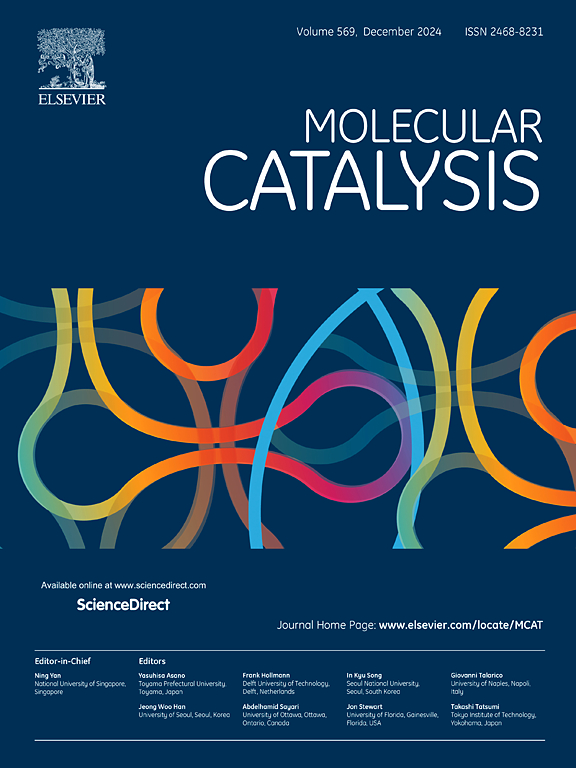Mechanistic insights and stereoselectivity in Ni(II)-catalyzed asymmetric [3 + 2]/[3 + 3] cycloaddition reactions of donor-acceptor cyclopropanes: A DFT study
IF 3.9
2区 化学
Q2 CHEMISTRY, PHYSICAL
引用次数: 0
Abstract
Density functional theory (DFT) was employed to investigate the reaction mechanisms and stereoselectivity of Ni(II)-catalyzed nonracemic donor-acceptor cyclopropane (DAC) [3 + 2]/[3 + 3] cycloaddition reactions with imine, triazine, and nitrone substrates. The results indicate that the overall reaction for all three substrates consists of two main steps: (1) nucleophilic attack of the substrate on the nonracemic DAC, and (2) C-C cyclization of the resulting key intermediate to form either five- or six-membered rings. For imine and triazine, the most favorable reaction pathway involves direct nucleophilic attack followed by cyclization, while for nitrone, the reaction proceeds via racemization to form an alkene intermediate, which then undergoes cyclization. Computational analysis reveals that the of the diastereoselectivity nucleophilic attack step is primarily controlled by distortion energy, whereas the enantioselectivity of the cyclization step is governed by interaction energy. Global reactivity index (GRI) analysis shows that imine exhibits the highest nucleophilicity with the lowest activation energy, while nitrone displays the weakest nucleophilicity and the highest activation energy. This theoretical study provides new insights into predicting reaction pathways and rationalizing the selective features of related cyclization reactions.

Ni(II)催化环丙烷供体-受体不对称[3 + 2]/[3 + 3]环加成反应的机理和立体选择性:DFT研究
采用密度泛函理论(DFT)研究了Ni(II)催化非外消旋给受体环丙烷(DAC)[3 + 2]/[3 + 3]环加成与亚胺、三嗪和硝酮底物的反应机理和立体选择性。结果表明,这三种底物的整个反应包括两个主要步骤:(1)底物对非外消旋DAC的亲核攻击;(2)关键中间体的C-C环化形成五元或六元环。对于亚胺和三嗪,最有利的反应途径是直接亲核攻击然后环化,而对于硝基酮,反应通过外消旋形成烯烃中间体,然后进行环化。计算分析表明,非对映选择性亲核攻击步骤主要受畸变能控制,而环化步骤的对映选择性主要受相互作用能控制。总体反应性指数(GRI)分析表明,亚胺亲核性最强,活化能最低;硝酮亲核性最弱,活化能最高。这一理论研究为预测反应途径和理顺相关环化反应的选择性特征提供了新的见解。
本文章由计算机程序翻译,如有差异,请以英文原文为准。
求助全文
约1分钟内获得全文
求助全文
来源期刊

Molecular Catalysis
Chemical Engineering-Process Chemistry and Technology
CiteScore
6.90
自引率
10.90%
发文量
700
审稿时长
40 days
期刊介绍:
Molecular Catalysis publishes full papers that are original, rigorous, and scholarly contributions examining the molecular and atomic aspects of catalytic activation and reaction mechanisms. The fields covered are:
Heterogeneous catalysis including immobilized molecular catalysts
Homogeneous catalysis including organocatalysis, organometallic catalysis and biocatalysis
Photo- and electrochemistry
Theoretical aspects of catalysis analyzed by computational methods
 求助内容:
求助内容: 应助结果提醒方式:
应助结果提醒方式:


